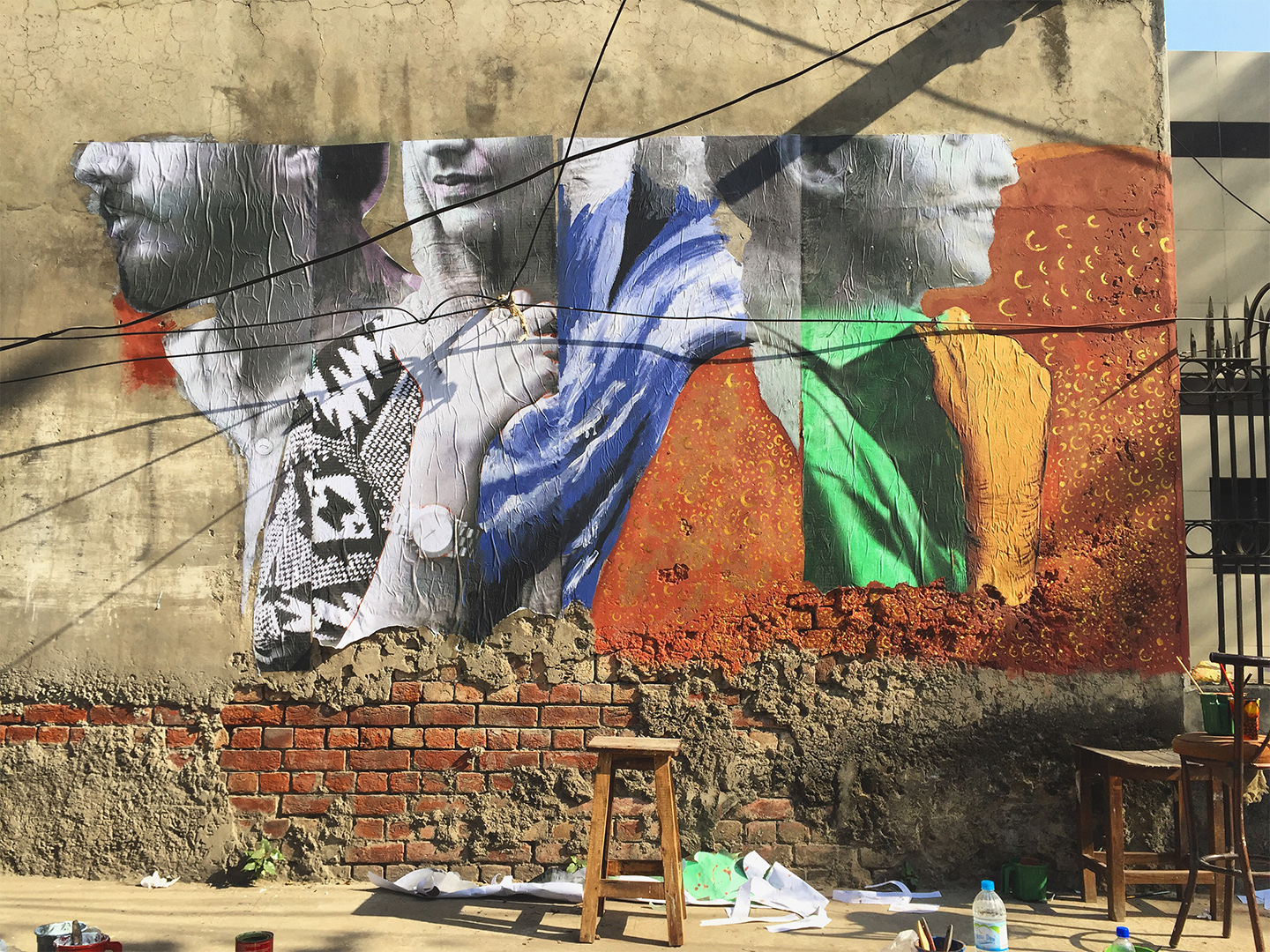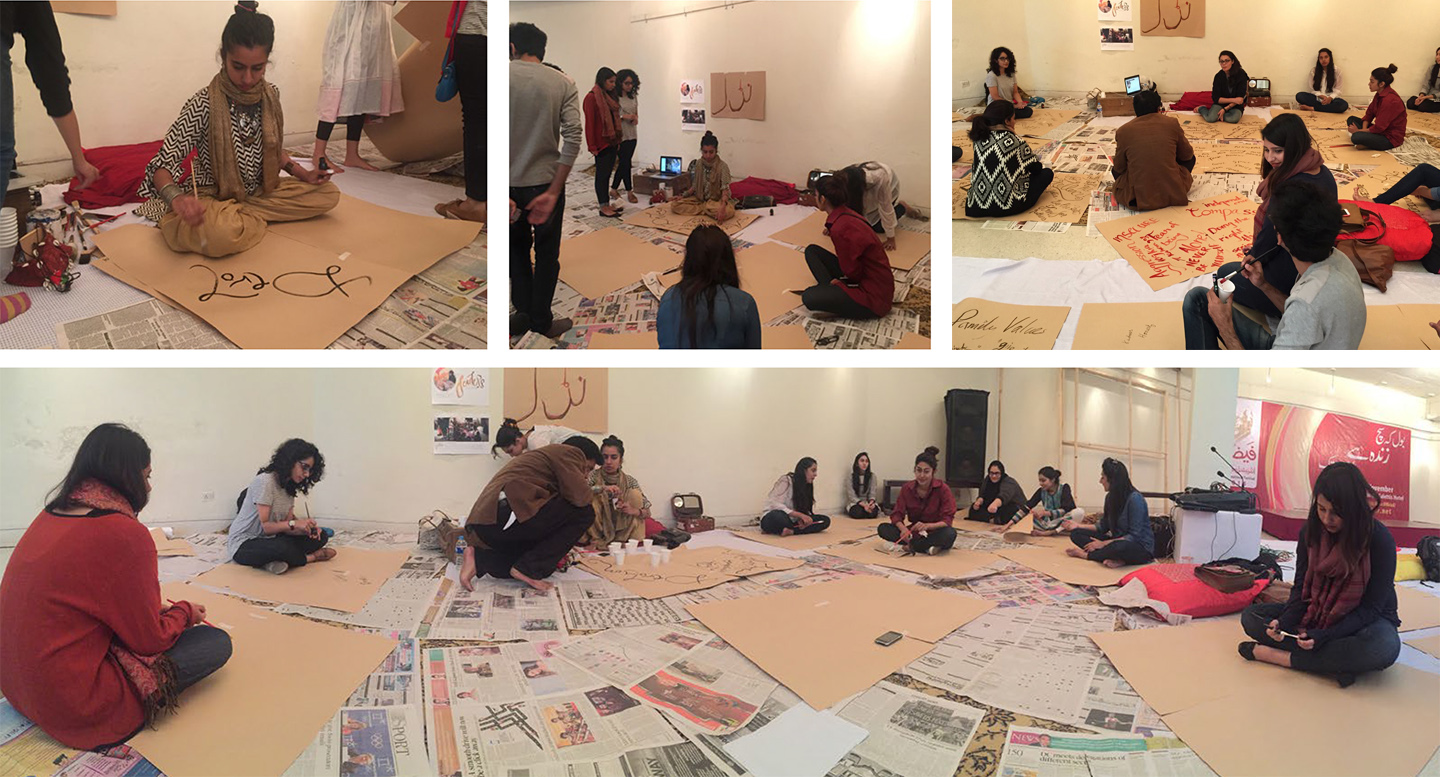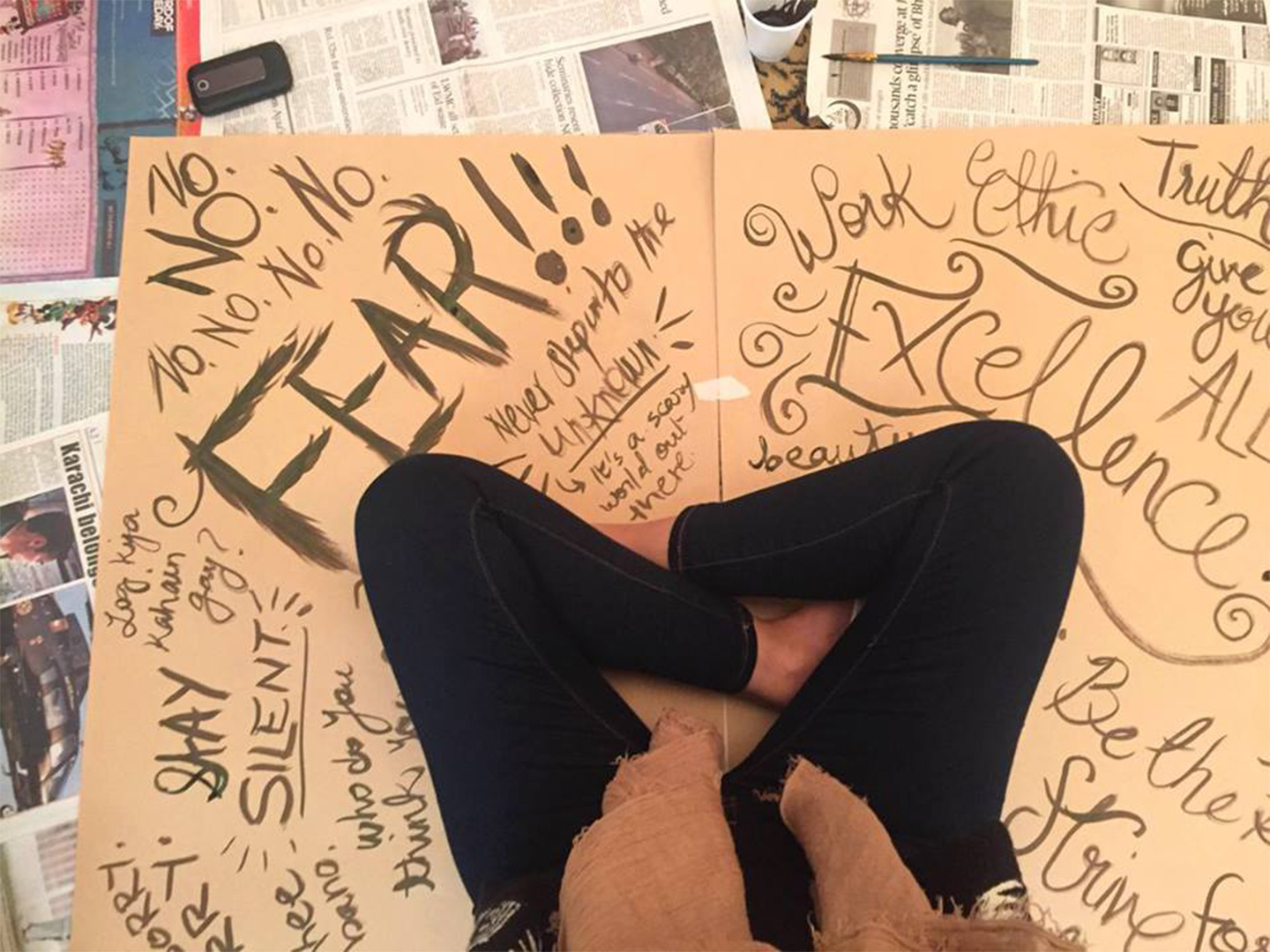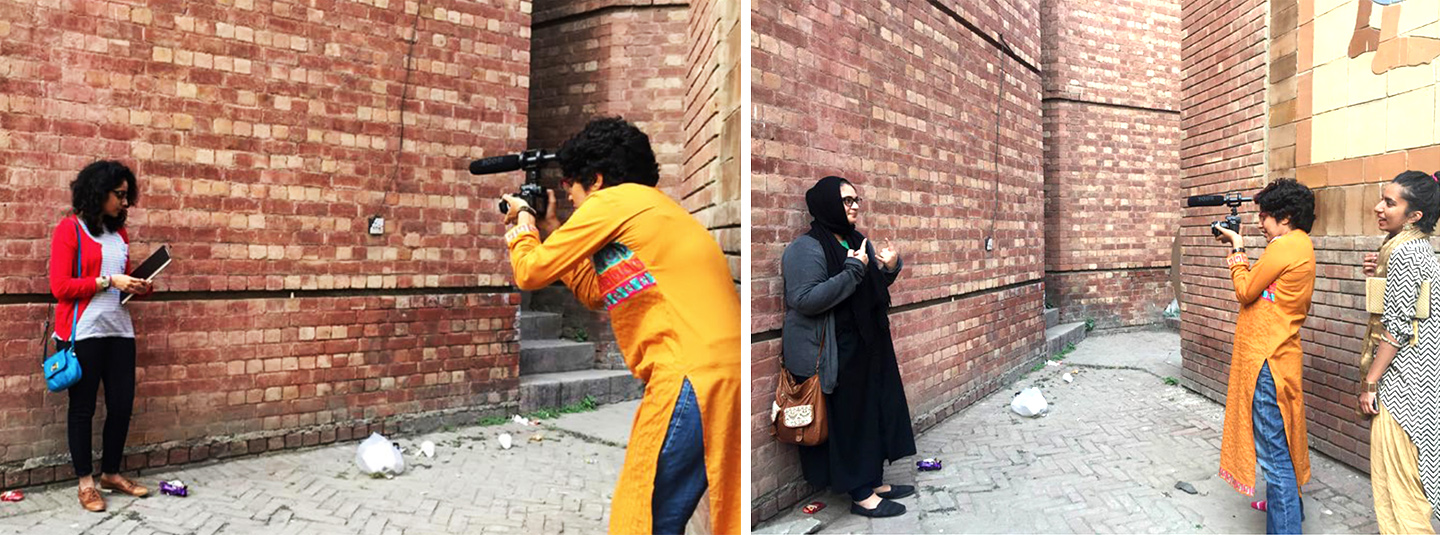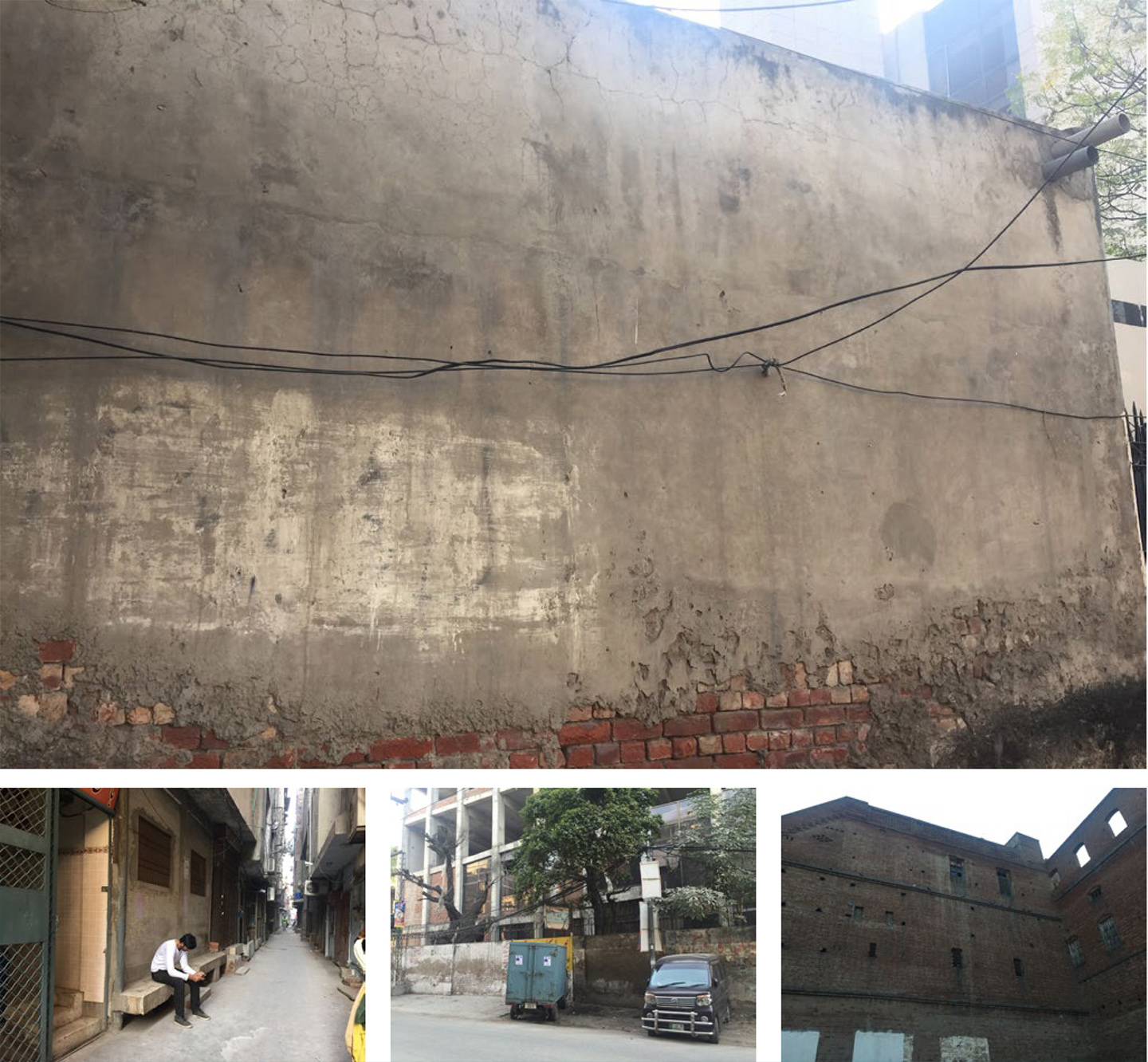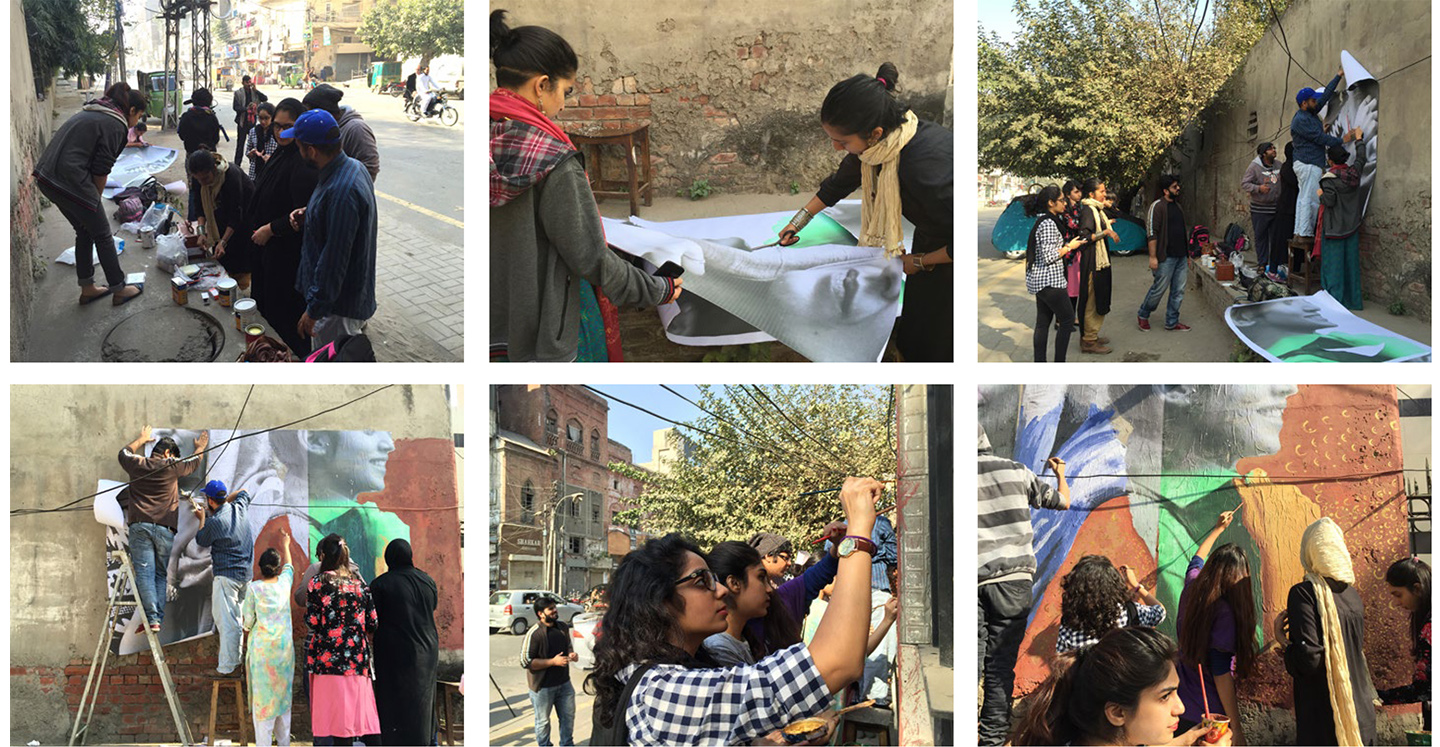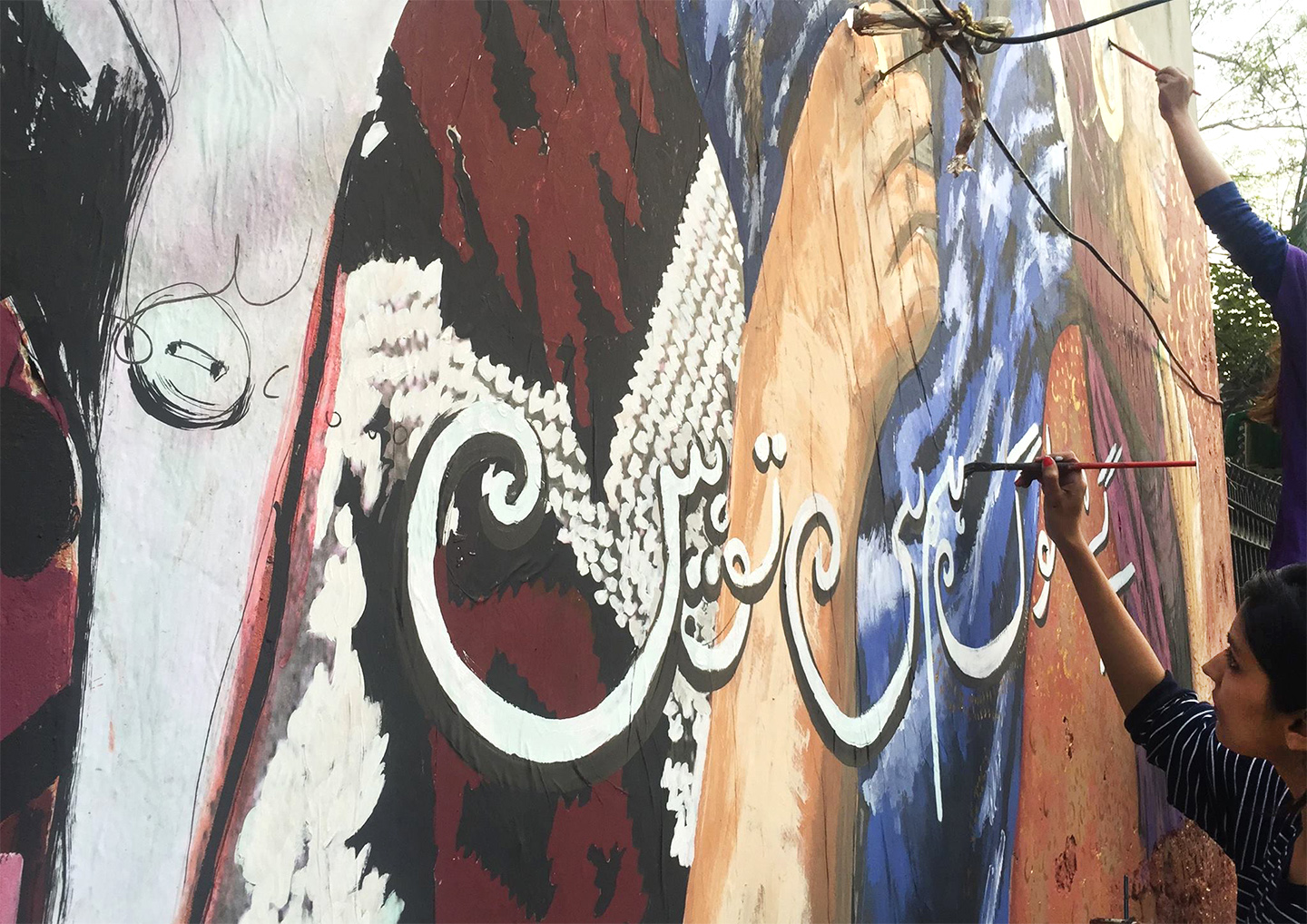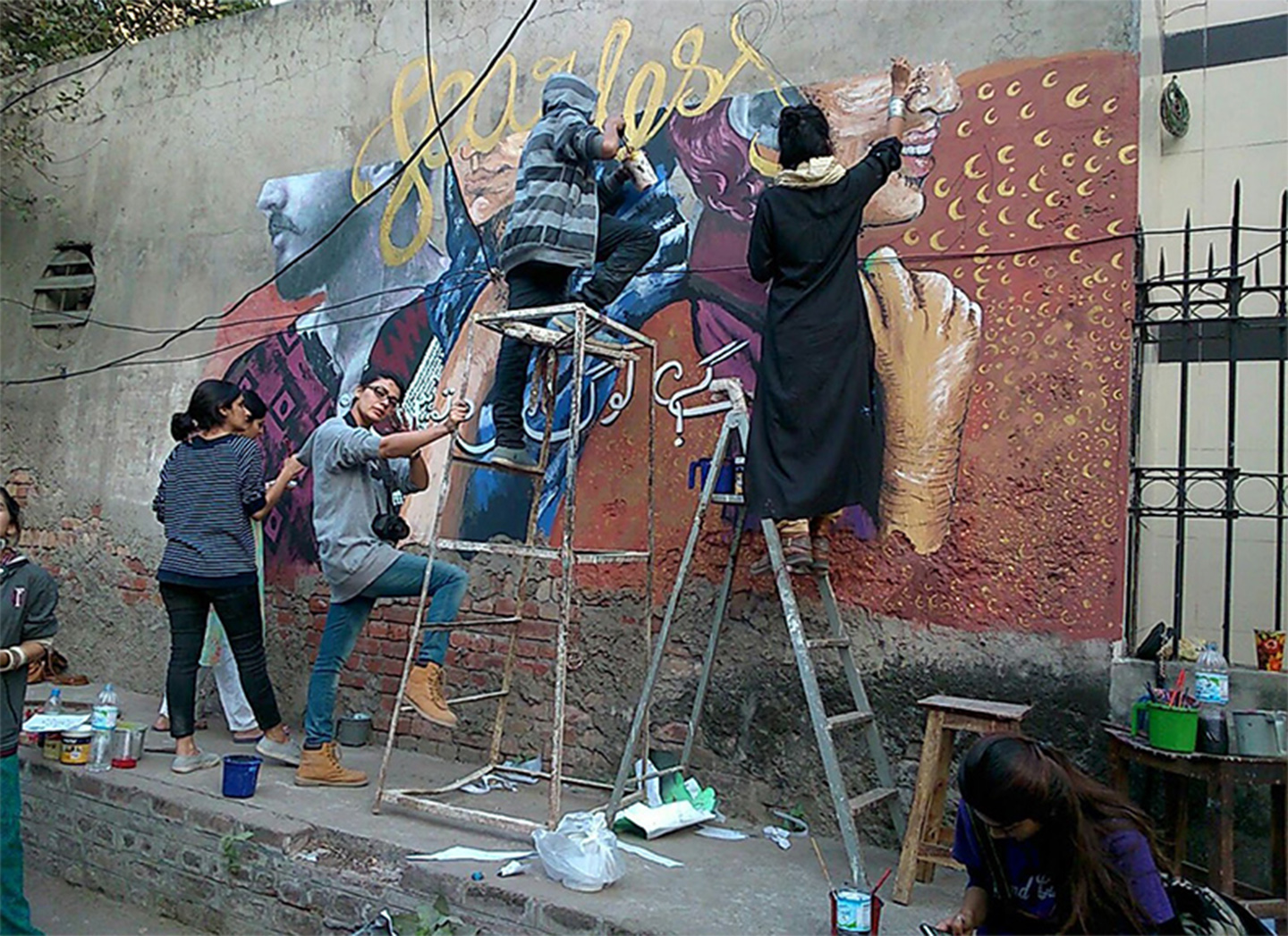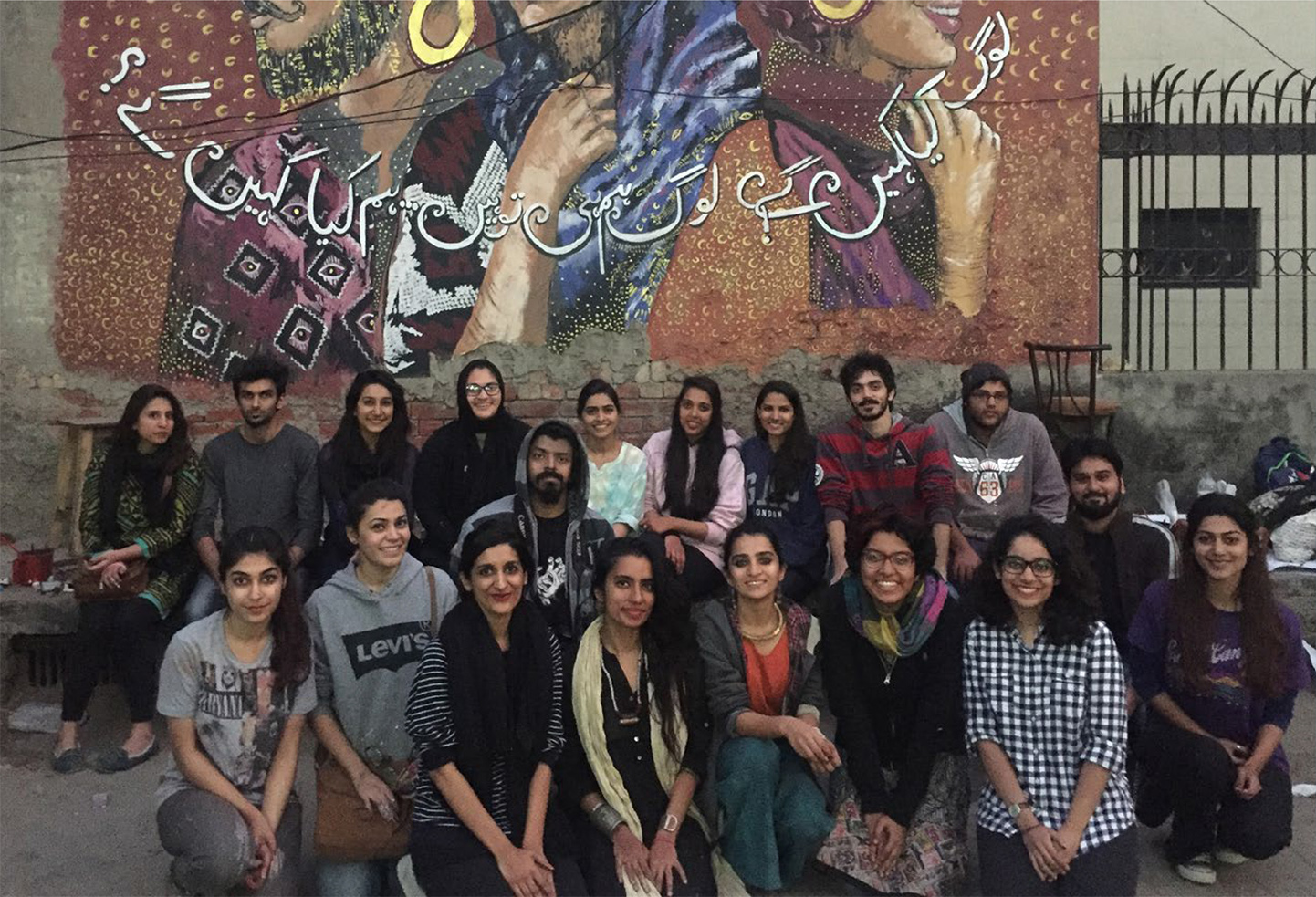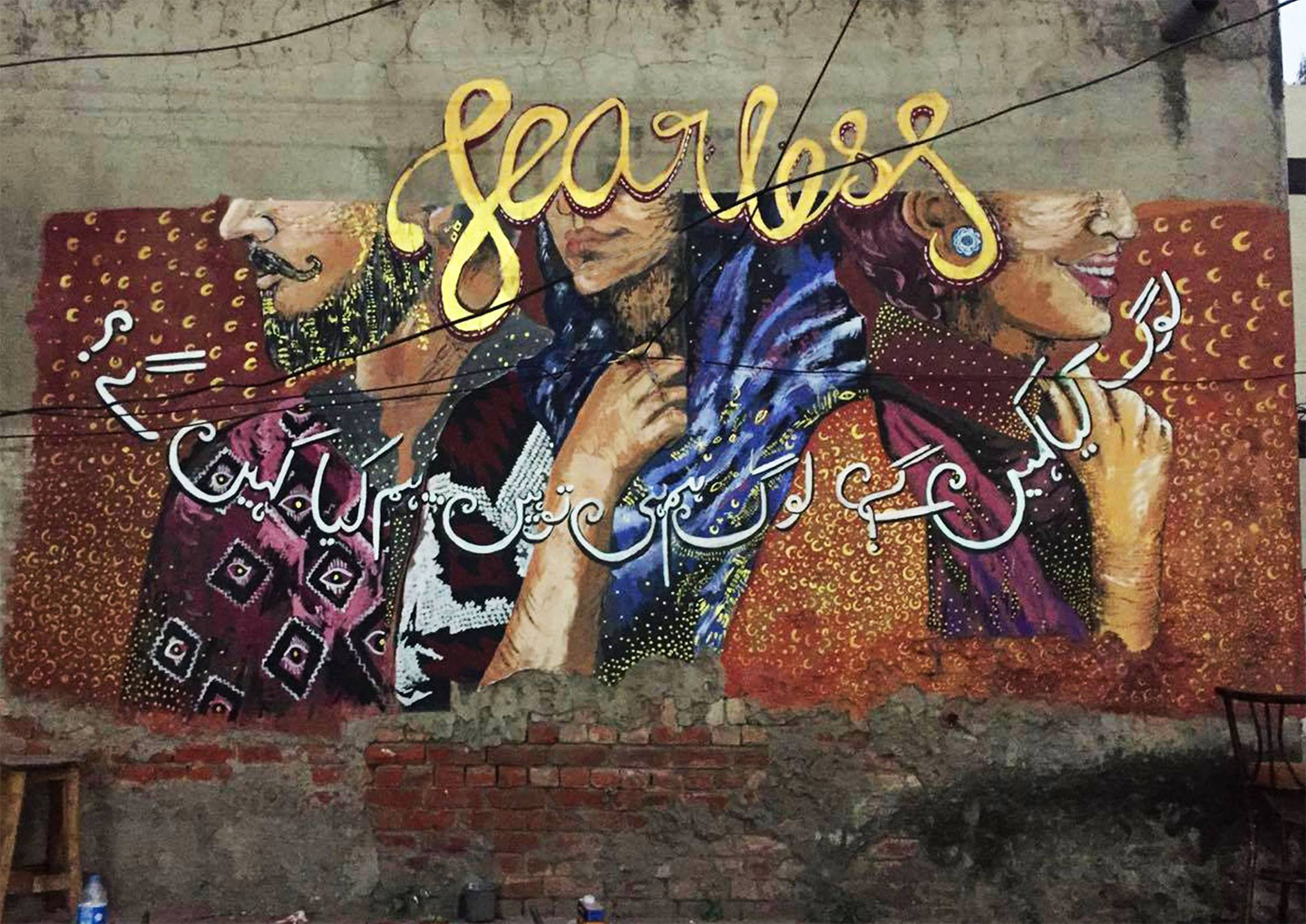Participative Art and Storytelling in Public Space
The Fearless Collective crossed the Indian border and stepped into the new yet known, Pakistan.
I had seen Shilo Shiv Suleman’s work and was stoked to find that she was conducting a workshop in Lahore. I decided to combine my illustration class with this workshop, and it became one of the most meaningful and impactful experiences for my class and myself.
The workshop hoped to create public art in Lahore on the theme of “Inheritance”. The workshop centered on understanding the words and behaviors that we have inherited, and finding the value of these social norms. Focusing on gender and our home context, a mural was painted in the bustling and historic Anarkali Bazaar as part of a public art initiative to start this conversation.
In Shilo’s words, “Lahore is heavy with old brick, history and the words of poets weighing down upon us. In Lahore, we were invited to part of Faiz Ghar festival, inspired by the poetry of Faiz Ahmed Faiz. And so we decided to explore the concept of “Inherited words and warnings”. We pass on heritage and history books from one generation to another, but what are the fears, warnings and other words that get carried by generations of women and men?”

